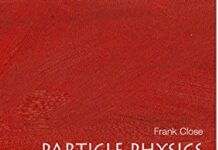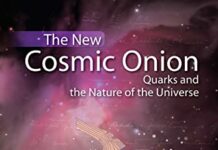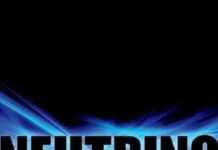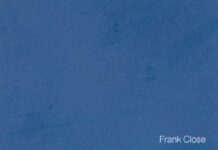
Ebook Info
- Published: 2007
- Number of pages: 176 pages
- Format: PDF
- File Size: 1.06 MB
- Authors: Frank Close
Description
What is ‘the void’? What remains when you take all the matter away? Can empty space – ‘nothing’ – exist? This little book explores the science and the history of the elusive void: from Aristotle who insisted that the vacuum was impossible, via the theories of Newton and Einstein, to our very latest discoveries and why they can tell us extraordinary things about the cosmos.Frank Close tells the story of how scientists have explored the elusive void, and the rich discoveries that they have made there. He takes the reader on a lively and accessible history through ancient ideas and cultural superstitions to the frontiers of current research. He describes how scientists discovered that the vacuum is filled with fields; how Newton, Mach, and Einstein grappled with the nature of space and time; and how the mysterious ‘aether’ that was long ago supposed to permeate thevoid may now be making a comeback with the latest research into the ‘Higgs field’.We now know that the vacuum is far from being ‘nothing’ – it seethes with virtual particles and antiparticles that erupt spontaneously into being, and it also may contain hidden dimensions that we were previously unaware of. These new discoveries may provide answers to some of cosmology’s most fundamental questions: what lies outside the universe, and, if there was once nothing, then how did the universe begin?
User’s Reviews
Reviews from Amazon users which were colected at the time this book was published on the website:
⭐This little book covers a LOT of science in a pretty short amount of time. Another reviewer said that it deals rather less with the void than one might think from the title. While this is true, there isn’t much that can be said about nothing without understanding that in the real universe, nothing is truly something after all. That said, there is a lot of explaining of “stuff” to get to explaining nothing, which leads the book to have a lot less nothing than you might expect.That said, the science is very solid and quite clearly explained. However, having extensively studied physics and chemistry years ago, this read more like a refresher course to me. I didn’t have too much trouble making sense of most of the science because I have been exposed to it in great depth (even though I may’ve forgotten some things). I worry that to the lay reader, the book would be extremely hard going, even as there are many analogies drawn, so I would put it closer to three stars for a reader with little or no science background.Still, written well overall and with great clarity. An interesting concept.
⭐80% of the book is about science history (common in many authors to fill up pages)When it comes to tackling the real question, the subject of the book, Frank tells us we basically don’t know what the heck is going on, the last info gained was from Higgs in the 60s, and he switches the subject to the Big Bang and Cosmology.No mention about dark energy, no in depth discussion about the quantum foam..
⭐Frank Close is an eminent physicist who is able to explain classical and modern physics in a very easy to read way. This comprehensive, concise book is not meant however for “beginners”. A certain level of education in physics is required to understand what the book is about.Close leads us from the old idea of the “horror vacui” to the empty space as modern physicists understand it today. Close pays also some attention to the big bang and the quantum physical background of the origin of our universe and relates it to experiments going on in the CERN collider.The story includes the Hicks field and the role of Hick’s particle in the genesis of the material world.
⭐Received timely and exactly as described. A quality used book The seller has my loyalty.
⭐Frank Close writes in the Oxford style, a little eccentric and quite profound. This is the clearest explanation of the Void, the so-called vacuum of empty space, that I have read. He shows very clearly how physicists came to understand the vacuum of space, which is really a quantum plenum. Well-written and clear (for the most part), this small volume is worth the price and the reading.
⭐Very fun and authored by one of the best in theoretical physics
⭐While a very well written book, The Void spends most of its 156 pages not getting to the point. But then the title is misleading — this is not about voids or vacuums or the idea of nothingness. Instead, Close writes a summary, fairly historical, of the theories contributing to the current views of the universe. We hear a lot about Newton and Einstein, Lorentz and Michelson, and so on. Special and general relativity are explained again (as they have been in myriad other books). Something as important as the Higgs field is glossed over, while such things as inertial frames of reference or concepts of curved space-time are covered in a tad too much depth or too much repetition. This is really a book for someone who needs a quick overview, rather like it is the introductory chapter to a text with a lot more depth. And from my perspective, it seems to ramble here and there, as if the author doesn’t quite want to make a point. Even at the end, the summary shows that the book was not about the void or vacuum but about what fills it and defines its boundaries/properties. Not quite what I was looking for.
⭐I can understand how some see the title of this book as misleading, but after reading it, I found it wonderful and swirling with currents of energy and supercharged particle of knowledge. A thoroughly amazing little book with content – and an approach – that mirrors the subject matter: nothingness is but energy misunderstood. Read it and prepare for a trip across unimaginably small distances that will change you forever.
⭐People often mistake the theory of evolution with that of the origins of the universe. For those lacking an open mind (including scientists) it’s an easy mistake to make. Frank Close demonstrates this in his conclusion that modern physics has not simply proved Aristotle wrong but has shown that nothing can evolve from nothing. It’s not a statement of fact but of opinion put forward by scientists who cannot understand why all observations of interactions between matter and antimatter balance themselves out while the Universe as a whole is made up of matter but no antimatter. The fact is that we consist of matter but no answer has been provided as to why that is. Close argues that a specific convergence of exceptional circumstances showed that nothing can be created out of nothing because nothingness itself never existed. Like Russell in his debate with Copleston in 1948 it’s easier to avoid the question because answering it would require a non-materialist interpretation of reality. In the Hawking-Hartle model, ‘the universe simply exists’. This interpretation is not based on scientific proof but atheistic conviction which determines a philosophical or prejudicial approach at the expense of reason.According to Close, modern physics proves ‘Everything comes from nothing’. This may be sufficient to assert the claim that nature abhors a vacuum and that nothing can come from nothing but it does not demonstrate that Modern physics is factual. Indeed it is evidence of the opposite. Close makes great play in arguing that ancient myths (if indeed they were myths) expressed the void in poetic terms. What Close – and scientists such as Dawkins – show is that their ‘reality’ is mere conjecture known colloquially as science fiction. Augustine of Hippo pointed out 1500 years ago, the creation accounts in Genesis were never meant to be taken literally. Creation itself was beyond human comprehension. To a limited extent Close accepts that scientists ‘may have given a name to the big question but that is not the same as understanding the answer’.Herein lies the rub. Modern physics claims that based on theories which scientists postulate, some of which are identified by using the scientific method, while others are speculative, it was a unique set of circumstances that caused the Big Bang and the creation of the universe. Yet there is an abject failure to acknowledge that while time as we understand it did not exist before the Big Bang the ingredients existed before and at the moment of the Big Bang otherwise it could not have occured. As Khun showed scientific orthodoxy is not per se proof of reality, merely collective opinion. Hence Close quotes the Higgs Boson as fact when CERN admitted a speculative 99% accuracy and before peer review. Higgs was a myth waiting for confirmation which has yet to arrive.Paul Davies is a cosmologist who has made the point that Close refuses to face. We are missing something but don’t know what. Close doesn’t want to admit or find it because it will make him question his philosophical commitment to atheism. In claiming something can come from nothing Close emasculates the English language in favour of prejudice. Close acknowledges that if the spontaneous symmetry breaking had made other parameters and forces, we would not be here to know it’. Hence there could be multiple universes and ‘ours is the one where by chance the dials were set just right’. So reason is reduced to speculation and scientific fact to science fiction. During the Enlightenment Kant suggested that as individuals we should each be able to think for ourselves. He overlooked human nature which drove people to believe they could know everything. Instead of admitting like Manuel, ‘I know nothing’, Close claims he knows all. He deludes himself. A good example of modern scientific perceptions four stars.
⭐Great book! It arrived on time, the price was fair and the content was really interesting!
⭐very good
Keywords
Free Download The Void in PDF format
The Void PDF Free Download
Download The Void 2007 PDF Free
The Void 2007 PDF Free Download
Download The Void PDF
Free Download Ebook The Void




